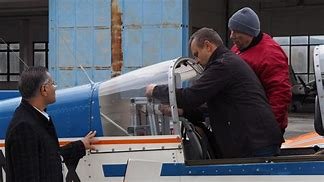The aerospace industry is an intricate ecosystem where precision, efficiency, and technological advancements dictate the success of Engineering, Procurement, Construction, and Installation (EPCI) projects. Engineers and project managers in this sector face unique challenges, ranging from regulatory compliance and safety standards to managing cost overruns and meeting aggressive timelines. With the demand for faster project execution, reduced operational costs, and enhanced safety measures, streamlining aeronautical EPCI has become a critical necessity for organizations striving to maintain a competitive edge in the industry.
The complexities of aerospace projects require a holistic approach that integrates advanced engineering methodologies, supply chain optimization, and innovative project management strategies. Every phase, from conceptual design to commissioning, must be meticulously planned and executed to avoid disruptions that could compromise project timelines and budgets. The integration of digital transformation in EPCI, particularly through Building Information Modeling (BIM) and advanced simulation technologies, plays a pivotal role in mitigating risks, improving collaboration among stakeholders, and ensuring seamless project execution. Engineers must leverage cutting-edge digital tools to enhance predictive maintenance, automate procurement workflows, and optimize resource allocation to improve efficiency across all stages of aeronautical infrastructure development.
A major hurdle in aeronautical EPCI is managing the procurement and logistics of specialized materials and components that meet stringent aerospace standards. Unlike conventional engineering projects, the aerospace industry demands materials with exceptional durability, resistance to extreme conditions, and compliance with international aviation regulations. The procurement process must be streamlined by adopting smart procurement strategies, such as supplier diversification, strategic partnerships, and leveraging data analytics for demand forecasting. By integrating AI-driven procurement systems, engineers can eliminate supply chain bottlenecks, minimize lead times, and reduce project costs without compromising quality and compliance requirements.
Construction and installation phases in aeronautical EPCI projects present their own set of challenges, especially when dealing with high-precision infrastructure such as aircraft hangars, launch pads, and manufacturing facilities. Implementing modular construction techniques and prefabrication strategies significantly reduces site-related risks and accelerates project completion. Engineers must also incorporate real-time monitoring systems, automated quality control measures, and advanced safety protocols to mitigate potential hazards associated with aerospace construction. Additionally, the adoption of green engineering solutions, such as sustainable materials and energy-efficient designs, is becoming increasingly important in aligning with global environmental standards and reducing the carbon footprint of aerospace infrastructure.
Regulatory compliance is another fundamental aspect that must be rigorously addressed in aeronautical EPCI. Engineers and project managers must stay up-to-date with evolving aviation laws, international safety regulations, and quality assurance frameworks that govern aerospace projects. Failure to comply with these standards can result in legal liabilities, financial penalties, and reputational damage. To navigate these complexities, organizations must foster strong collaboration with regulatory bodies, engage in continuous training programs, and integrate compliance-driven engineering practices into every phase of project execution. By embedding compliance into the EPCI framework, companies can ensure seamless approvals, avoid costly delays, and enhance overall project credibility.
Another game-changing factor in optimizing aeronautical EPCI is the adoption of digital twin technology. By creating a virtual replica of an aerospace project, engineers can perform real-time simulations, predict potential failures, and optimize asset performance before physical implementation. Digital twins enable predictive maintenance, reduce downtime, and enhance decision-making processes by providing engineers with data-driven insights. The ability to analyze structural integrity, monitor operational efficiency, and optimize lifecycle performance through digital simulations provides a significant advantage in delivering high-quality aerospace projects within stipulated timeframes.
Workforce competence and collaboration also play a crucial role in the successful execution of EPCI projects in the aerospace industry. Engineering teams must be equipped with multidisciplinary skills that cover mechanical, electrical, and structural engineering aspects. Effective communication and collaboration between engineers, project managers, procurement specialists, and regulatory authorities ensure a streamlined workflow and prevent costly errors. Organizations must invest in continuous training programs, knowledge-sharing platforms, and advanced project management software to enhance teamwork, improve productivity, and foster innovation within the aeronautical EPCI sector.
For engineering firms and project managers aiming to excel in aeronautical EPCI, embracing a culture of innovation, technological adoption, and proactive risk management is imperative. By implementing data-driven decision-making, leveraging digital transformation, and fostering strategic collaborations, the aerospace industry can achieve optimized project delivery with enhanced efficiency, reduced costs, and uncompromised safety standards. As the sector continues to evolve, engineers who adapt to emerging technologies and industry best practices will be at the forefront of transforming aeronautical EPCI into a more agile, sustainable, and high-performing domain.
Stay ahead in aeronautical EPCI! Subscribe to our expert insights on EPCI.ng and gain access to cutting-edge strategies, industry trends, and engineering innovations that will elevate your projects to new heights.







Leave feedback about this